#indian wildlife reserve
Photo

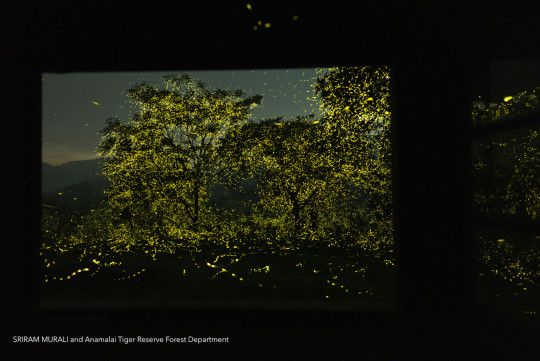
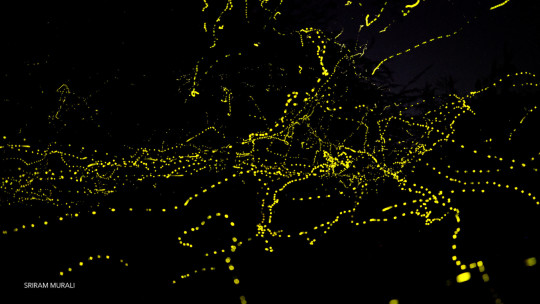
Billions of Fireflies Light Up an Indian Wildlife Reserve in Rare Footage Captured by Sriram Murali.
vimeo
#insect#insects#firefly#fireflies#animal#animals#light#lightning bug#lightning bugs#indian wildlife reserve#sriram murali#thisiscolossal#article#articles#anamalai tiger reserve#tamil nadu#india#phenomena#rare#forest#forests#nature#night#night-time#dark#video#videos
41 notes
·
View notes
Text

A cheetah and her cub roam the Phinda Game Reserve in KwaZulu-Natal, South Africa. Such private reserves have supplied much of the newly established Indian cheetah population.
PHOTOGRAPH BY RONNY SEN
#ronny sen#photographer#national geographic#cheetah#cheetah cub#animal#mammal#wildlife#cat#phinda game reserve#kwazulu-natal#south africa#nature#indian cheetah
41 notes
·
View notes
Video
Camissonia bistorta by Arlene Schag
Via Flickr:
Southern California - Ramona, Camissonia bistorta growing in full sun near Cedar Creek Falls, May 2010. Small population. Chaparral / Riparian habitat, a beautiful native in an area where most have have been crowded out by foreign plants and introduced weeds.
#Camissonia bistorta#4petals#wildlflower#Ramona#California#SoCal#Cedar#Creek#trail#native#identify#nature#name#red dots#short#small#outdoor#invasive species#introduced species#Inaja Indian Reservation#conservation#flores#flickr#Westcoast Wildlife
0 notes
Text
Jim Corbett National Park Booking
Jim Corbett National Park Uttarakhand is an Indian wildlife reserve that is known for its diverse flora and fauna. Here are the steps you can take to book a visit to Jim Corbett National Park:
You can book a trip to Jim Corbett National Park Uttarakhand online or through a booking agent authorized by the park.
You can book a safari or accommodation through the website. There are several safari options available, such as Jeep Safari, Canter Safari, and Elephant Safari. Choose the one that suits your preferences.
Choose the type of accommodation. Jim Corbett National Park Uttarakhand offers various options, ranging from government-owned forest rest houses to luxury resorts. Choose according to your budget and preferences.
Make the necessary payment to confirm your booking. Different booking platforms may offer various payment methods, such as credit cards, debit cards, net banking, or cash on arrival. Remember to plan your visit well in advance, as the park receives a large number of visitors, especially during peak seasons. Additionally, it is advisable to read and understand the rules and regulations of the national park to ensure a safe and enjoyable experience.
#"Jim Corbett National Park Uttarakhand is an Indian wildlife reserve that is known for its diverse flora and fauna. Here are the steps you c#You can book a trip to Jim Corbett National Park Uttarakhand online or through a booking agent authorized by the park.#You can book a safari or accommodation through the website. There are several safari options available#such as Jeep Safari#Canter Safari#and Elephant Safari. Choose the one that suits your preferences.#Choose the type of accommodation. Jim Corbett National Park Uttarakhand offers various options#ranging from government-owned forest rest houses to luxury resorts. Choose according to your budget and preferences.#Make the necessary payment to confirm your booking. Different booking platforms may offer various payment methods#such as credit cards#debit cards#net banking#or cash on arrival.#Remember to plan your visit well in advance#as the park receives a large number of visitors#especially during peak seasons. Additionally
1 note
·
View note
Text


#wild#indian wildlife#best indian wildlife photographer#wildlife photography#wildlife#indian wildlife photographer#indian wildlife safari#nature#nature photography#tadoba andhari tiger reserve#yuriko tiger#tigerheart#tiger bigcat tadoba nature earthcapture bigcatsforever bigcatsofinstagram indian wildlifes wildlifephotographer jayantaguhaphotography natg#tadoba
0 notes
Photo
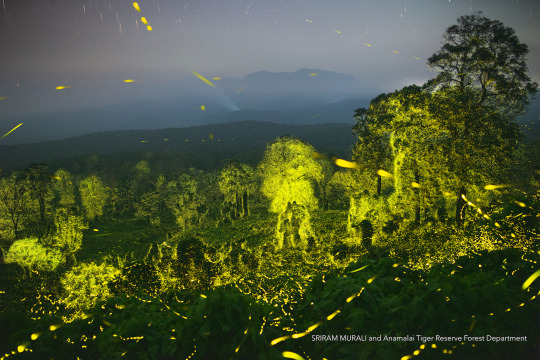
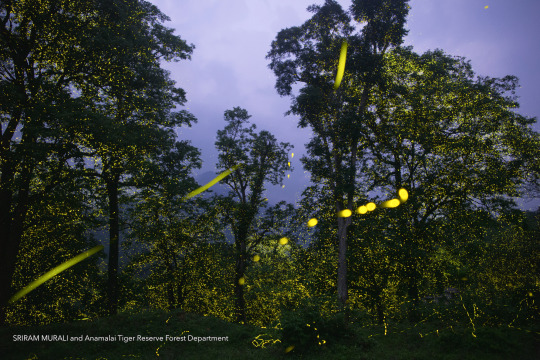

Billions of Fireflies Light Up an Indian Wildlife Reserve in Rare Footage Captured by Sriram Murali
1K notes
·
View notes
Text
Fort Belknap Indian Community celebrates reintroduction of locally extinct swift fox.
Aaniiih and Nakoda communities have organized the restoration of local native prairie ecosystems in this landscape of the northern Great Plains just north of the Missouri River. In 1997, Fort Belknap Indian Community organized the first-ever reintroduction of locally extinct black-footed ferrets to occur on tribal land. Fort Belknap has also organized the reintroduction of bison. Since 2020, the reservation has also organized the Fort Belknap Grassland Restoration Project, a program designed for Native youth to collect native grass seeds, practice plant identification, and learn about ecology, traditional stories, and Indigenous place names. Swift fox, an indicator species closely tied to the Great Plains, had been eliminated and driven extinct across the northern Great Plains due to US-government-supported wolf- and coyote-killing programs in the twentieth century. Beginning in autumn 2020, Fort Belknap released 27 swift foxes on tribal lands. Now, as of September 2022, there are over 100 swift foxes in this prairie landscape. Between September 2020 and September 2022, Fort Belknap has observed the swift foxes pairing and breeding at 4 den sites, and the birth of 20 swift fox kits. In the next few days, Fort Belknap will release another 28 swift foxes.

From a press release, September 2022.
Excerpt:
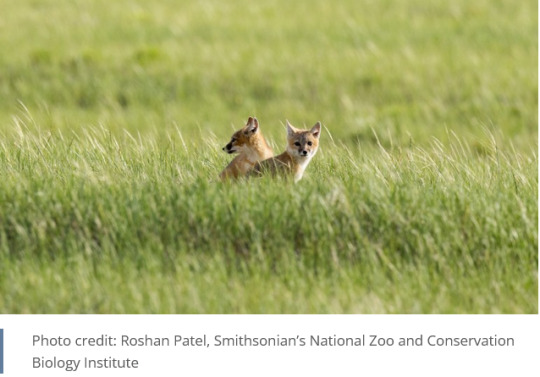


Today the Fort Belknap Indian Community commemorated three years of its swift fox recovery program with the release of three swift foxes on Tribal lands, bringing the total to 103 recovered back to these prairie grasslands. Based on post-release monitoring efforts, the native species is reproducing in the wild, which is a critical measure of success for a self-sustaining population.
“After being absent for more than 50 years, the swift fox has returned to the grasslands of Fort Belknap and our people could not be prouder,” said Harold “Jiggs” Main, director of the Fort Belknap Fish and Wildlife Department.
Over the last four years, the Nakoda (Assiniboine) and Aaniiih (Gros Ventre) Tribes of Fort Belknap have worked in collaboration with the Smithsonian’s National Zoo and Conservation Biology Institute, Aaniiih Nakoda College, Defenders of Wildlife, American Prairie, World Wildlife Fund and Wilder Institute/Calgary Zoo on this five-year reintroduction effort.
This week, three of 28 foxes trapped in Wyoming will be released during a special ceremony held by the Fort Belknap Indian Community. The remaining 25 foxes will be released later this week. [...]
Monitoring efforts via GPS collar tracking show some foxes traveled long distances, including one documented over 200 miles away, while most have settled on Fort Belknap and the surrounding areas in Phillips and Blaine counties in Montana. At least four females and males (four dens) have been documented pairing up or “denning” and 20 kits have been born in the wild since the original reintroduction of 27 foxes in fall 2020. [...]
“It has been an honor for Defenders to play a role in the Aaniiih and Nakoda effort to bring back swift fox to their lands, and also as a long-term partner to recover buffalo and endangered black-footed ferrets back to their lands,” said Chamois Andersen, Rockies and Plains senior representative at Defenders of Wildlife. “Fort Belknap is truly a model in native plains wildlife conservation.”
The swift fox is the latest extirpated species to return to Fort Belknap, joining other iconic prairie species successfully reintroduced to Indigenous lands under the leadership of the Fort Belknap Fish and Wildlife Department. Historically, swift foxes lived across much of North America’s Great Plains.
“The vast grasslands on Fort Belknap provide a home to a variety of avian and terrestrial wildlife [...]. With support from numerous partners [...], the Aaniiih and Nakoda people have been bringing Indigenous wildlife back to these native grasslands for over three decades,” said Tim Vosburgh, wildlife biologist with Fort Belknap Fish and Wildlife Department. [...]
“Since its inception, American Prairie has taken inspiration from the land stewardship and rewilding efforts of the Fort Belknap Community. We are proud to stand with our neighbors and support the repatriation of swift fox to their home in Montana's Great Plains,” said Beth Saboe, senior public relations manager for American Prairie.
Swift fox numbers declined precipitously in the late 1800s, mainly due to poisoning intended for coyotes and wolves and the loss of grassland habitat. During this same time, they were also eliminated from the northern portion of their range. Swift foxes made a comeback after successful reintroduction efforts began in 1983 in Canada and on the Blackfeet and Fort Peck Indian communities in Montana. However, these reintroduced populations have yet to reconnect with populations in the southern portion of their historic range. Establishing a population of swift foxes on Fort Belknap’s lands will expand the species’ occupied range in the north and help bridge the distribution gap between existing populations to the north and south.
---
Headline, photos, captions, and text published by: Smithsonian’s National Zoo and Conservation Biology Institute. “Tribes Successful with Swift Fox Reintroduction Program at Fort Belknap.” 28 September 2022.
198 notes
·
View notes
Text
What I think several of the Disney Princesses' lifestyles may be like in a Modern AU :
. Snow White - Basically is an overworked maid at a cruel rich woman's mansion, then quits and becomes a baker at a fine patisserie....and then leads a socialite/cultural patron lifestyle after she marries Florian ( who is an air force captain in a Modern AU )
. Cinderella : Similar case with Snow White btw except she went from being An overworked maid to a socialite/art patron after she and Kit ( who is a wealthy investigative lawyer in a Modern AU ) got married
. Aurora : Was a florist at a fancy botany shop before leading a socialite/ladies newsletter runner lifestyle after she and Prince Philip ( who is a naval captain in a Modern AU )
. Ariel : Becomes a marine biologist
. Belle : Becomes a librarian in a grand Museum
. Jasmine : Basically is an heiress/model/socialite in Saudi Arabia. Her dad basically owns a huge artifacts business, and her Indian mom is a leading diplomat from India in the Riyadh International Embassy. And then Aladdin is a young upstarting musical artist in Saudi Arabia when they first met in person. Cue both of them being amongst celebrity couples in Saudi Arabia, where Jasmine eventually has her own jewelry/cosmetics line.
. Moana : Becomes a marine biologist who is also an advocate for indigenous rights
. Pocahontas : Becomes a naturalist in wildlife reserve park and an advocate for indigenous rights
. Tiana : Similarly with in Princess and the Frog and also becoming a BLM advocate
. Malina : Goes from being a secretary in Kuzco's Enterprise to becoming acting co CEO ( similarly with Pepper Potts' arc here )
. Elsa : Becomes a diplomat for Norway in UN, and also a cultural patron
. Anna : Becomes an art gallery exhibitionist and curator in Norway
. Rapunzel : Becomes an art curator and teacher in an art museum
. La Esmeralda : Becomes a famous folk dancer and an advocate for anti Romani sentiments
. Megara : Becomes a diplomatic agent in Athens
. Maid Marian : A social journalist before opting for a socialite/ladies newsletter runner lifestyle after she and Robin Hood gets married while Robin Hood becomes a govt agent ( similar case with Jacqueline Bouvier btw )
. Kida : Becomes a naval captain and an advocate for indigenous rights
. Merida : Becomes a zoologist and a HeforShe advocate
. Mulan : Becomes a diplomatic agent and a HeforShe advocate
11 notes
·
View notes
Photo
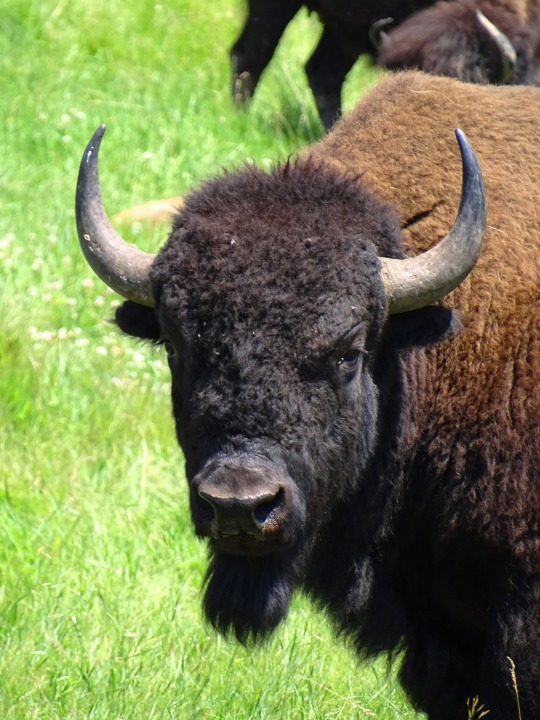

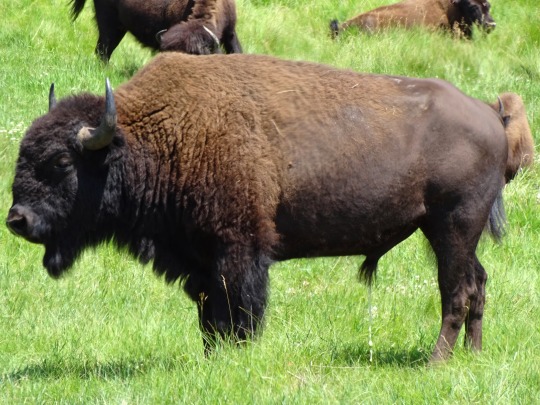

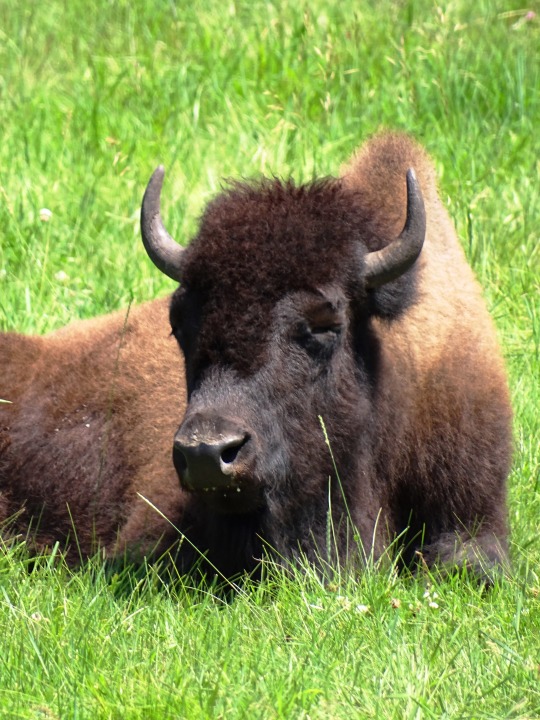
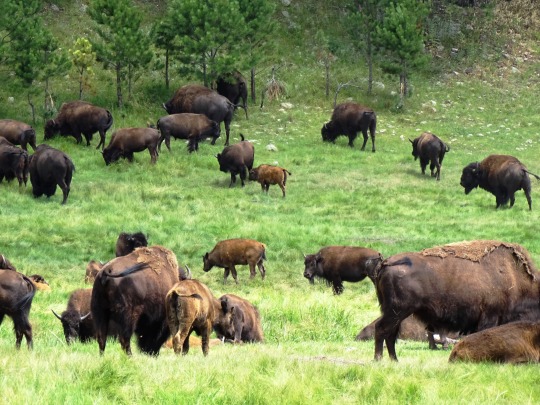
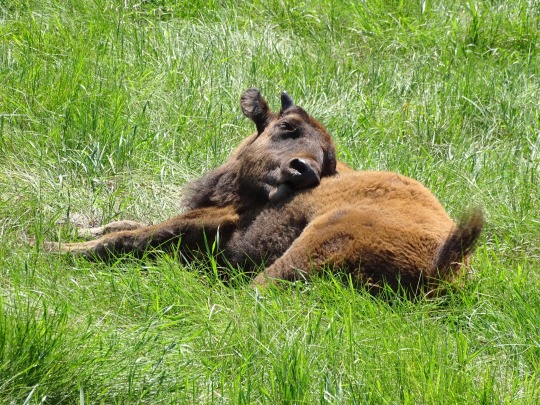

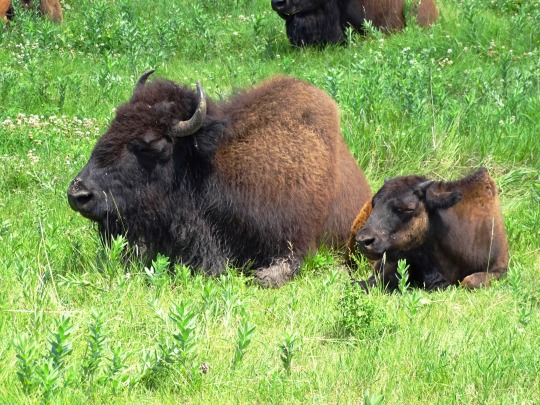
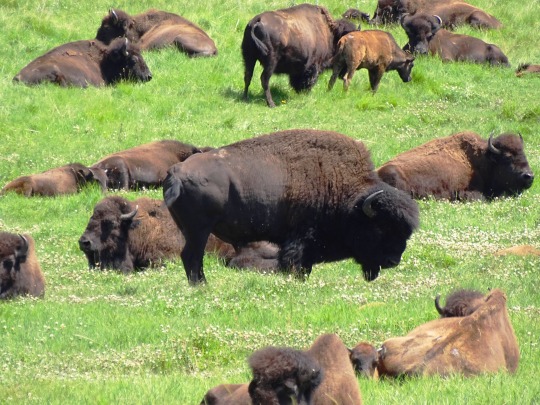
National Bison Day
You see them everywhere — on coins, on sports team logos, and a couple of state flags. No, we’re not talking about the bald eagle. This honor is reserved for North American bison. On National Bison Day, November 5, an annual event that falls on the first Saturday in November, all Americans should reflect on the impact bison have as a part of our environmental and cultural heritage. Bison are especially revered by Native people — central to their survival as both food and spiritual inspiration.
National Bison Day timeline
1900s Bison herds severely reduced due to excessive hunting and abuses
Hunting dramatically reduced the population — leaving a mere 700 in private herds; even Yellowstone was left with only 23 bison by 1902.
1992 Native American tribes formed new group to share resources and help bison
The InterTribal Indian Council formed not only to return bison to tribal lands, but also to create culturally-sensitive educational programs and provide both technical resources and help to 56 tribes.
1997 Groups signed Bison Memorandum of Understanding
The first conservation agreement between an environmental organization and a diverse collective of Native American tribes agreed to combine efforts to return wild bison to tribal land.
2012 The U.S. Senate passed first National Bison Day Resolution
The Senate passed its first resolution honoring National Bison Day, which was also supported by various tribal groups and the Wildlife Conservation Society.
How to Observe National Bison Day
Sign a petition
Visit a national park
Wear your National Bison Day T-shirt
Stand in support of returning wild bison to their original tribal lands on thousands of acres of Native American reservations. Collaborations among certain groups are working to remind Americans about the important role bison play in the lives of native peoples. Bison are considered sacred and they are even featured in certain tribal creation stories. Bison have also been a source of food and clothing — providing hides for tents, robes, shoes, and tools so that people could survive in harsh climates.
You may not be able to get to a large national park like Yellowstone, but there are a vast number of smaller parks from which to choose. Imagine what it must have been like to see thousands of bison freely roaming the plains. Give your children a chance to experience the wonder of our latest national icon — the bison.
Many groups use this day to raise funds in support of bison. It won’t be hard to find a T-shirt showing your love of bison. Wear it proudly because it’s for a great, patriotic cause.
5 Reasons We Love Our Bison
Watch that tail
They've got skills
They're oldies but goodies
Throw a stone — hit a bison
Bison as symbols
If a bison’s tail is hanging down and moves naturally from side to side, the animal is relaxed. But when the tail stands straight up, it's a signal the bison is getting ready to charge.
Given their size as the largest mammals in North America, bison are surprisingly agile with an ability to swim well, jump up to six feet, and run between 35 and 40 mph.
Bison have always roamed in Yellowstone National Park as evidenced by prehistoric fossils found in modern times.
Herds of bison can be found in all 50 states.
The American bison is not only the country's official mammal; the bison is also the state mammal of Wyoming, Oklahoma, and Kansas.
Why National Bison Day is Important
It's our national mammal
They're different from buffalo
They were almost extinct
President Obama, with the support of a broad coalition of Native American tribes, wildlife support groups, and concerned members of the Senate, signed a 2015 law making the proud and majestic bison our national mammal. This law helps to protect bison from extinction and encourages a return back to their native tribal lands.
We know you have been wondering about this so we're going to set you straight. Bison and buffalo are not the same. Bison are native to North and South America and Europe, while the traditional home of the buffalo is in Africa and Asia. At the height of their magnificence, there were between 30 and 60 million bison in the New World circa the 16th century. Today, there are currently half a million bison roaming happily across North America. .
Native peoples once lived their lives around the vast herds of bison that swirled around areas of the west and northwest, the central plains, and the southeastern U.S. Once pioneers started their westward trek, both the Native American tribes and the bison herds were seen as obstacles to progress. As the native peoples were systematically forced off their lands by either poachers or fake government treaties, the bison herds began to disappear; by the early part of last century, bison were on the way to extinction. Today, through the collective efforts of Indian tribes, wildlife associations, the national park system and others, bison have re-emerged as a protected species.
Source
#National Bison Day#first Saturday in November#5 November 2022#wildlife#animal#NationalBisonDay#American Bison#Buffalo#Bison bison#USA#Custer State Park#I love Custer State Park#Black Hills#South Dakota#travel#landscape#flora#fauna#wildflower#original photography#countryside#vacation#summer 2019#tourist attraction#landmark#meadow
62 notes
·
View notes
Text
𝕣𝕖𝕤𝕖𝕒𝕣𝕔𝕙 𝕡𝕣𝕠𝕛𝕖𝕔𝕥: 𝕓𝕦𝕣𝕖𝕒𝕦 𝕠𝕗 𝕚𝕟𝕕𝕚𝕒𝕟 𝕒𝕗𝕗𝕒𝕚𝕣𝕤

When the factory fur trade of North America was abolished in 1822, the US Government was left searching for a way to maintain control in Indian territories. John C. Calhoun, then Secretary of War, created the “Bureau of Indian Affairs (BIA)” on March 11, 1824. He did so without authorization from Congress, which is against the general practice although not expressly forbidden by the Constitution. John Calhoun would go on to become the Vice President of the United States the following year.
1825 was an interesting year in US history, representing the end of the Era of Good Feelings that followed the War of 1812. The presidential election would split the previous first party system into the Democrat and Republican system we now know today. The country was taking its first steps to limit the expansion of slavery into its newly aquired territories. As Jacksonian Democracy extended the privilege of voting to most white men aged 21 or older, removing the previous requirement to own land, racist and colonial mentalities spread in the form of “manifest destiny”. The US needed to remove Indian peoples from their homelands and they needed a way to do it.
The Bureau of Indian Affairs would go on to forcibly remove native peoples from their nations under the direction of Senator and then Secretary of State, John C. Calhoun. In the late 1800’s, after succeeding in removing many tribal nations from their homelands, the Bureau of Indian Affairs created the Residential Schooling system to assimilate Indian children into American culture. Missionaries had already established the practice, but the Bureau of Indian affairs built their schools specifically off-reservation and incorporated “students” from a variety of different tribes to aid in their goal of assimilation. Their model was the infamous Carlisle Indian Industrial School in Pennsylvania.
The 1960’s and 1970’s saw a rise in activism for and among American Indians. The Bureau faced a number of displays of public opposition by Indian people and those who supported them, like the 1972 Occupation of BIA Headquarters. Today, the Bureau of Indian Affairs is responsible for quite a few different things, all concerning the affairs of American Indian people on Tribal lands.
The Bureau as a whole is responsible for the federal recognition of tribes, most recently the Little Shell Tribe of Montana. The Office of Field Operations is responsible for regional operations, working with tribal governments on the management of natural resources, agriculture, fish and wildlife, and parks. The Office of Justice Services operates several programs and also provides funding for law enforcement, tribal courts, and detention facilities on federal lands. Their jurisdiction is surprisingly expansive, holding authority over all crimes committed on reservations and all federal crimes, as well as all crimes committed within “dependent Indian communities” or on trust lands. It is also the responsibility of the OJS to enforce tribal criminal codes and assist tribes in maintaining their courts and justice systems. They also operate the Indian Police Academy, where agents are trained to work specifically in Indian Country. The Office of Trust Services is responsible for overseeing land and resources that are recognized as tribal but owned in trust by the US federal government. Finally, the Office of Indian Services comprises a wide range of different programs, including social services and child welfare, transportation infrastructure, awarding federal funds to tribes, and providing resources to tribal governments. It is generally in their mission statement and enumerated responsibilities to uphold tribal sovereignty under the Indian Self Determination and Education Assistance Act.
Sources: x.x.x.
#history#anthropology#native american studies#bureau of indian affairs#natives in academia#native history#indigenous#studyblr#natives on tumblr#indigenous people#native americans#land back#american history#john c calhoun
76 notes
·
View notes
Text
Gir Jungle Safari (3 Hrs)
Gir Jungle Trail is the forest department organized open Jeep Safari ride of approximately 3 hours inside the dense forest of Gir National Park. One may get chance to see Asiatic Lion, leopards, and many other wild animals, birds & rich flora and fauna of Gir forest.
Gir Jungle Trail Package Rate & persons allowed in one vehicle:
INR 4500/- to 4800/- for Indians (Per Jeep)
INR 12,000 to 15,000/- for Foreigners (Per Jeep)
One Jeep can accommodate maximum 6 adults and 1 child. Age till 12 years considered as child and more than 12 years considered as adult for safari booking. If number of adults are less then more children can be added up to 7. Since the rates are per Jeep and not per person, rates will be same for 1 person and for 6 persons boarding the safari.
What is Included in this Package?
Permit issued by Forest department to enter in to the Gir Jungle Trail
Open Gypsy vehicle (old model), Driver & Guide approved by Forest Department
Payment processing charges & GST
Safari coordinator service charge who will assist you while Boarding.
What is Not Included?
Camera fees, if any. (There is no charge for Mobile Phones)
Pick-up / Drop from Resort / Hotel. It can be arranged at extra charge.
Gypsy vehicles are subject to availability at the time of boarding. If Gypsy vehicles are not available, new Bolero vehicle will be alloted compulsorily and guest has to pay INR 1500/- extra to the driver.
Reporting Place & Time: Boarding / Reporting point for safari is “Sinh Sadan, Sasan Gir”. Visitor Need to report at least 30 minutes before scheduled Safari time. There is ample parking facility for visitors to park their vehicles and board Jeep.
Safari Timings and Availability of Permits: There are 3 Safari timings as mentioned below & Forest department issue limited Permit for each time slots. 100% of Permits are available for advance booking, on the spot booking is not available.

Gir Jungle Trail remains closed from 16th June to 15th Oct every year. However, you can enjoy Devaliya Jeep Safari throughout the year.
Cancellation Policy
Cancellation Before 10 Days: 75% Refund
Cancellation Before 05 Days: 50% Refund
Cancellation Before 02 Days: 25% Refund
Cancellation Less than 02 Days: 0% Refund
Note: Days are calculated excluding the Safari Boarding day & Cancellation request day. Cancellation request received after 6 PM will be considered on next working day. Cancellation policy mentioned above is subject to change.
It is mandatory to provide ID proof detail of all members while booking. ID proofs submitted while Safari Booking will be verified with the original ID proofs at safari boarding time. Boarding will not be possible if found any discrepancy and any refund will not be processed in this case. No ID proofs are accepted other than mentioned in the Booking Form.
Once the safari is booked, any kind of modification is strictly NOT possible, like Change in the ID proof number, name of person including spelling mistake, addition or deletion of person, change in safari date or time slot, etc.
There are 13 routes for this jeep safari. Any of the routes is allocated to each jeep randomly. Possibility of lion sighting is equal in each route and it is purely on your luck. One can get a chance to see lots of wildlife animals including lions & Leopards.
We will refund full amount within 2 working days in case of unavailability of requested jeep safari.
Forest depart reserves the right to cancel the permit or slightly modify the timing in unavoidable circumstances. Decision of the forest department will be final in such case.
vist our website: https://www.girnationalpark.co.in/safaris/gir-jungle-trail
5 notes
·
View notes
Text
About Sunderbans National Park
Information About Sunderbans National Park, India
Covering an expanse of approximately 10,000 square kilometers, the Sundarbans forest spans across both India and Bangladesh. India claims around 4,262 square kilometers of this natural marvel, while the rest falls within Bangladesh's territory. Sundarbans National Park occupies the Indian portion, renowned globally for hosting the largest mangrove forest on the planet. This national park is a haven for nature enthusiasts and wildlife aficionados alike. With its thick mangrove cover, intricate network of river channels, picturesque estuaries, and a thriving population of Royal Bengal Tigers and various other wildlife species, the Sundarbans offers a captivating landscape that beckons visitors from far and wide. Recognized as a UNESCO World Heritage Site, the park possesses a unique allure that draws tourists seeking unparalleled natural beauty and biodiversity experiences.
Located at the southeastern edge of the 24 Paraganas district in West Bengal, India, the Sundarbans National Park derives its name from the Sundari mangrove plant (Heritiera Minor). Situated within the world's largest delta formed by the Ganges, Brahmaputra, and Meghna rivers, this national park covers an expansive area of approximately 2585 square kilometers, making it India's largest national park and tiger reserve. The Sundarbans region encompasses around 2125 square kilometers of mangrove forest, while the remaining area, spread across 56 islands, is dominated by water bodies, totaling 4262 square kilometers.
Flora in Sundarbans National Park:
The Sundarbans, renowned as the largest mangrove forest globally, boasts the mangrove tree as its flagship species, thriving uniquely in its waterlogged terrain. With remarkable adaptability, these trees endure prolonged inundation by sending up spikes from their roots, aiding respiration and providing structural support to the mangrove ecosystem. Among its diverse array of flora, the Sundarbans is home to the 'Sundari' mangrove, a distinctive variety that dominates the landscape and lends its name to the forest. Encompassing over 300 plant species, the Sundarbans region harbors a rich botanical tapestry.
Fauna in Sundarbans National Park:
The Sundarbans National Park, dominated by the majestic Royal Bengal Tigers, reigns supreme as the apex predator with a population exceeding 400 individuals. These iconic tigers exhibit remarkable swimming prowess in the park's salty waters and are notorious for their occasional predation on humans. While tourists flock to catch a glimpse of these striped wonders, the park harbors a diverse array of fauna that equally captivates wildlife enthusiasts.
In addition to the Bengal Tigers, Sundarbans teems with captivating wildlife such as Fishing Cats, Leopards, Macaques, Wild Boars, Wild Buffaloes, Rhinoceroses, Indian Mongooses, Jungle Cats, Foxes, Flying Foxes, Pangolins, Barking Deer, Spotted Deer, Hog Deer, and Chitals. The park is also home to saltwater crocodiles and various snake species, adding to its rich biodiversity.
Moreover, Sundarbans boasts a vibrant avian population, featuring a kaleidoscope of exotic birds. Among them are Openbill Storks, Black-capped Kingfishers, Black-headed Ibises, Coots, Water Hens, Pheasant-tailed Jacanas, Brahminy Kites, Pariah Kites, Marsh Harriers, Swamp Partridges, Red Junglefowl, Spotted Doves, Common Mynahs, Jungle Crows, Jungle Babblers, Cotton Teals, Herring Gulls, Caspian Terns, Gray Herons, Common Snipes, Wood Sandpipers, Green Pigeons, Rose-ringed Parakeets, Paradise-flycatchers, Cormorants, Grey-headed Fish Eagles, White-bellied Sea Eagles, Seagulls, Common Kingfishers, Peregrine Falcons, Woodpeckers, Whimbrels, Black-tailed Godwits, Little Stints, Eastern Knots, Curlews, Golden Plovers, Northern Pintails, White-eyed Pochards, and Whistling Teals. These avian residents contribute to the park's enchanting atmosphere, making it a paradise for birdwatchers and nature lovers alike.
Climate of Sundarbans National Park:
The climate in the Sunderbans forest is generally temperate and pleasant, with temperatures ranging from 20 to 48 degrees Celsius. Due to its proximity to the Bay of Bengal, humidity levels are consistently high, averaging around 80%, and heavy rainfall is common. The summer season, lasting from March to May, is characterized by hot and humid weather. Monsoon conditions prevail from mid-May to mid-September, marked by increased humidity and windy conditions. The region frequently experiences storms, particularly in May and October, which can escalate into cyclones. Winter sets in from October to February, bringing colder temperatures to the area.
2 notes
·
View notes
Photo

Tiger of Tadoba
https://jayantaguhaphotography.com/
#tiger#tiger cub#indian tiger#Royal Bengal Tiger#wild#wildlife#wildlife photography#wildlife photographer#nature#nature photography#big bat#big cat india#tadoba andhari tiger reserve#tadoba#tiger bigcat tadoba nature EarthCapture bigcatsforever bigcatsofinstagram indian_wildlifes wildlifephotographer jayantaguhaphotography natge
1 note
·
View note
Text

Indian jackals (Canis aureus indicus)
Koshi Tappu Wildlife Reserve, Nepal
Photo by michael bamford
104 notes
·
View notes
Text
Pench National Park: Explore Wildlife Wonderland

Located in the southeastern foothills of the Satpuda Mountains, Pench National Park invites nature enthusiasts to explore its diverse ecosystems. The park, named after the winding Pench River, spans the southeast border of Madhya Pradesh and seamlessly extends into Maharashtra. Covering 758 sq km of pristine wilderness, it is divided into the 299 sq km Indira Priyadarshini Pench Nationwide Park and the 464 sq km Mowgli Pench Sanctuary.
For an immersive adventure in dense forests, encountering wildlife and marveling at nature's beauty, consider booking a Pench safari online. Ensure your reservation for an extraordinary journey into the heart of the wilderness.
Flora & Fauna at Pench National Park:
Pench's undulating hills and valleys are mainly covered by dry deciduous forest, transitioning to lush greenery near the Pench River. Dominant tree species include Teak, Mahua, Tendu, Flame of the Forest, Golden Shower, and Bamboo.
The park provides a habitat for 39 mammal species, 13 reptile species, and 3 amphibian species. Commonly sighted animals include chital, sambar, wild boar, jackal, Indian leopard, sloth bear, wild dog, jungle cat, and gaur. With over 300 bird species, including migratory birds, Pench offers a rich birdlife experience.
Location of Pench National Park: Spanning 758 sq km in the lower southern Satpura hills, Pench National Park is divided by the Pench River into Seoni and Chhindwara districts. Accessible near Turia Gate, Seoni district, Kurai, Madhya Pradesh, the park can be reached via air, road, and railway. Inquire or contact provided phone numbers for Pench safari bookings.
History of Pench National Park:
Declared a sanctuary in 1977 and a national park in 1983, Pench became the 19th tiger reserve in India. In 2011, it was recognized as the "Best Managed Park" by Madhya Pradesh Tourism. Pench's biodiversity has inspired renowned authors and, notably, Rudyard Kipling's classic 'The Jungle Book.'
How to Reach:
Nagpur airport (93 km) and Seoni Railway Station (30 km) serve as convenient entry points. Make an online Pench safari booking in advance for easy transit from these hubs. Buses and jeeps are available at Seoni bus stand for swift park access.
Lakes in Pench:
Explore Khokha Lake, Junewani Talao, and the picturesque lake area of Bodha Nala. Enhance your adventure with an online Pench safari booking, ensuring an immersive experience in renowned spots like Baghin Nala, known for tiger sightings.
Best Season to Visit:
Plan your Pench safari booking between November and May for a captivating experience. Note that the park remains closed in July, August, and September.
Land of Tigers:
Embark on a Pench jungle safari for a chance to witness the significant Bengal Tiger population, with approximately 40 tigers as per the latest Tiger Census.
Different Bird Species:
Experience vibrant birdlife at Pench National Park, home to over 210 species, including migratory birds. Book your Pench safari for an unforgettable encounter.
Other Animals:
Embark on a thrilling journey with a safari booking in Pench, home to approximately 39 mammal species, 13 reptile species, and 3 amphibian species. Encounter Chital, Sambar, Nilgai, wild boar, and Jackal among common wildlife sightings.
Why Make a Pench Safari Booking at Vannraj Resorts? Discover the reasons for a Pench National Park safari booking with Vannraj Resorts:
Immersive Jungle Experience: Expert naturalists guide you through Pench, sharing extensive knowledge about the diverse flora and fauna.
Night Safari Adventure: Explore Pench’s wildlife from a different perspective with knowledgeable guides.
Stargazing under the Pench Sky: Enjoy a mesmerizing stargazing session away from urban lights.
Wildlife Photography Tips: Learn valuable tips and tricks from experienced naturalists and wildlife photographers.
Luxurious Accommodations: Unwind in comfortable and stylish accommodations surrounded by the natural beauty of Pench at Vannraj Resorts.
2 notes
·
View notes
Text

Indian yellow-throated marten (Martes flavigula flavigula)
Sitabani Wildlife Reserve, Uttarakhand, India
Photo by Koshy Koshy
44 notes
·
View notes
